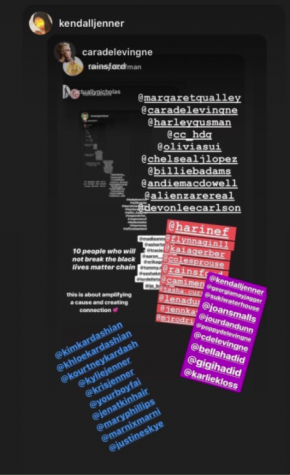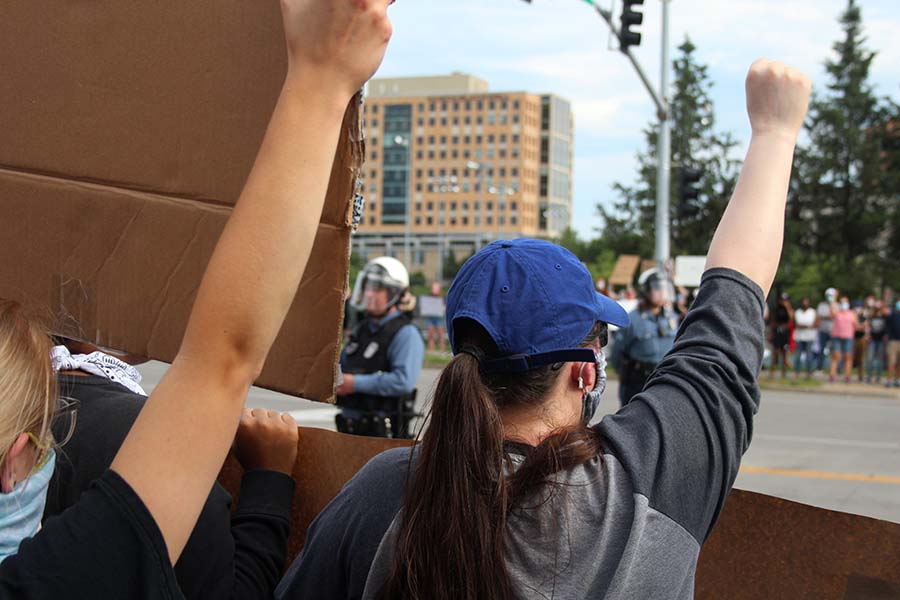Closing the Curtain on Performative Activism
The harmful effects of repost culture and their impact on modern day movements.
PHOTO | Maggie McKinney
A protester holds up her fist in solidarity with the Black Lives Matter movement during the protest against police brutality at the Country Club Plaza on May 30.
On the morning of Tuesday, June 2, the world awoke to a social media storm of black squares. These posts, mostly captioned #blackouttuesday, also began to flood the #blacklivesmatter hashtag, effectively “muting” one of the most efficient ways to exchange information on the movement. The mass posting of “support” ended up speaking louder than the voices that truly spoke to the movement.
#theshowmustbepaused | For more information on how to take action visit https://t.co/vDBp9z7ljq pic.twitter.com/1eJMZ9dWC2
— theshowmustbepaused (@pausetheshow) June 2, 2020
Performative activism is the act of depicting oneself as an activist to better the public’s perception of them, especially through social media. These little acts can have little to no effect on the movement at hand. They serve as a box to check, or in this case a black square, in order to be deemed decent by one’s peers. Social media has created bare minimums of “activism” for teens today that allow people to escape the true responsibility of truly forming opinions and speaking out. It lets users camouflage themselves in half-hearted posts in order to avoid any real activist work.

True activism is not just tagging “10 people who will not break the Black Lives Matter chain” on one’s Instagram story. It is not simply posting a photo of yourself at a march and calling it a day. It is not repeating the same acronyms and phrases over and over again until they lose all meaning. True activism is amplifying voices fighting for justice first hand. It is sharing educational podcasts or infographics and providing links to petitions. It is reaching out to your community to find what needs to be done and how you can get the ball rolling towards change.
Although #blackouttuesday was meant to serve as an interruption of daily social media norms and a sign of unity with the Black Lives Matter movement, it created a virtual log jam and engulfed important protest information. It didn’t end well. But that’s okay. The important thing is that people learn from it. It would be more beneficial to replace the black squares with information on how to help or what needs to be done. The real downfall of performative activism is that false sense of satisfaction it can give to its participants. This is especially apparent in the case of virtue signaling, in which people feel that their expression of moral beliefs is enough of a contribution to a movement.
The sentiment behind the desire to feel unity with and take part in a movement is valuable, truly, but there are better ways to do so. Research is crucial. Before speaking up, make sure you know exactly what you want to speak on. Share and sign petitions. Write letters to government officials. Listen to the voices around you and ask questions. Own up to the things that didn’t work too well in the past – and find better ways to participate in the movement.
Most performative activists have good intentions. But now, it is time to move past the realm of checking boxes and into the world of doing more than what’s expected. Move beyond reposts and towards change. The time is now to close the curtains on this performance and open ourselves to the reality that we must do better.




